Global VoIP traffic has surged past 236 billion minutes per month, according to TeleGeography’s 2024 report, yet many Asterisk admins still face jitter, one-way audio, and call drops that make “unlimited calling” feel anything but reliable. The cause isn’t Asterisk itself, it’s often the SIP trunk behind it. Even providers that claim Asterisk compatibility can introduce codec mismatches, poor routing tables, or hidden latency spikes that degrade call quality.
For engineers managing multi-site PBX deployments, the challenge is clear: finding a SIP trunk provider that doesn’t just connect calls, but sustains carrier-grade uptime, consistent QoS, and transparent signaling.
This 2025 expert guide compares the top SIP trunk providers built for Asterisk, not by marketing claims, but by technical performance. You’ll learn which providers actually meet Asterisk’s strict interoperability standards, how their routing architectures impact voice quality, and what measurable differences appear during real setup and testing.
Let’s start with why Asterisk demands more than just basic SIP compatibility, and what separates a reliable trunk from one that quietly erodes call quality.
Why Asterisk Requires a Reliable SIP Trunk, Beyond Basic Compatibility
Asterisk’s flexibility is its greatest strength, and its biggest vulnerability. Because it’s an open-source PBX that integrates with nearly any SIP implementation, it relies heavily on how well the SIP trunk adheres to signaling standards like RFC 3261 and how cleanly it exchanges SDP (Session Description Protocol) during call setup. Even minor deviations can trigger cascading issues: codec mismatches, one-way audio, or call drops during re-INVITE sequences.
The Asterisk SIP stack is highly configurable but unforgiving when paired with inconsistent trunks. A single misaligned codec negotiation between G.711 and G.729 can raise CPU load, increase transcoding delay, and distort audio. Likewise, trunks that don’t maintain tight jitter buffers or properly manage NAT traversal often cause delayed RTP streams, the root of that split-second echo or one-way audio most admins dread.
Reliable SIP trunks are engineered to stabilize those variables. Top providers maintain round-trip times (RTT) below 150 ms, packet loss under 1%, and jitter under 30 ms, ensuring call quality stays within the ITU-T G.107 MOS threshold for “toll-grade” voice. They also publish interoperability templates and pre-tested configuration files that eliminate guesswork for Asterisk admins, simplifying registration, authentication, and codec setup.
As noted in the Asterisk Wiki (Digium Docs, RFC 3261 compliance), interoperability testing is the cornerstone of stable deployments: “A SIP provider that properly adheres to SIP and SDP standards will minimize negotiation failures and RTP anomalies in Asterisk-based systems.” That’s why the best providers don’t just promise compatibility, they prove it through validated configs, transparent signaling logs, and real-world uptime metrics.
Key Criteria for Choosing the Best SIP Trunk Provider for Asterisk
Selecting the right SIP trunk provider for Asterisk isn’t just about call connectivity, it’s about sustaining predictable performance and cost control. Each technical criterion translates directly into operational reliability, scalability, and long-term business value.
SIP & Codec Interoperability
Asterisk supports multiple codecs, including G.711 (PCM), G.729, and Opus, allowing flexible bandwidth and quality management. The challenge begins when a provider limits codec options or forces transcoding between them. For instance, providers that mandate G.729 can strain Asterisk’s CPU due to real-time compression, while also triggering additional licensing costs. In contrast, providers offering native Opus or G.711 compatibility reduce transcoding overhead, resulting in cleaner audio and more stable performance.
The best SIP trunk providers maintain codec transparency, meaning they support the same codecs Asterisk uses natively, and publish tested configurations that map codecs correctly in sip.conf. This ensures every call path remains optimized from the PBX to the endpoint without quality loss or extra compute load.
Network Reliability and Latency
Call quality depends heavily on routing architecture. A provider with globally distributed Points of Presence (POPs) minimizes packet travel distance and maintains consistent latency across regions. A good benchmark: network uptime above 99.999% and latency below 150 ms for international routes.
Look for vendors that implement geo-redundant SIP routing, where inbound and outbound calls automatically reroute through the nearest or least congested node. This design is especially critical for multi-site Asterisk deployments with users in different continents, it prevents single-point failures and sustains voice clarity even during regional outages.
Fraud Prevention and SIP Security
VoIP fraud, especially toll fraud, can drain budgets overnight if authentication is lax. Attackers often exploit unsecured SIP endpoints or brute-force weak credentials. The most reliable SIP trunk providers mitigate this through IP-based authentication, TLS/SRTP encryption, and call origination whitelisting.
Providers like DIDlogic also implement STIR/SHAKEN protocols, ensuring caller ID authenticity and preventing spoofed calls, a growing concern for enterprise VoIP systems. For Asterisk admins, security-ready trunks mean fewer disruptions, cleaner CDRs, and reduced exposure to financial loss.
Support and Troubleshooting Depth
“24/7 support” doesn’t guarantee technical depth. Asterisk engineers value providers who can interpret SIP traces, PCAP captures, and error codes rather than simply escalating tickets. When issues like SIP 403 (Forbidden) or 486 (Busy Here) occur, response speed matters, but so does the provider’s ability to diagnose root causes in the signaling layer.
Providers that understand Asterisk’s SIP stack can guide admins through fixes directly in configuration files (extensions.conf, pjsip.conf), saving hours of guesswork. In practice, this level of expertise can prevent recurring failures and keep production systems stable during peak hours.
Transparent Pricing Models
Pricing models vary widely across providers, and many hide costs behind technical jargon. The three dominant structures are:
| Model | Description | Ideal Use Case |
| Per-Channel | Fixed capacity; predictable monthly billing. | Steady call volumes. |
| Per-Minute | Pay for actual usage; flexible but variable. | Seasonal demand or low call frequency. |
| Burstable/Hybrid | Base channels with scalable bursts during peak times. | Growing or high-traffic environments. |
Hidden fees can arise from channel locking, setup charges, or interconnect surcharges that inflate total cost of ownership. The best SIP trunk providers — including DIDlogic — publish clear rate sheets and avoid binding users to long-term contracts, allowing Asterisk deployments to scale economically and transparently.
Comparison: Top SIP Trunk Providers for Asterisk PBX (2025)
| Provider | Asterisk Compatibility | QoS & Uptime | Global POPs | Pricing Transparency | Support Expertise | Best Use Case |
| DIDlogic | Pre-tested templates & full SIP compliance (RFC 3261) | 99.999% uptime | 60+ | Transparent rate sheets, no hidden fees | Deep SIP/Asterisk debugging support | Global enterprise deployments |
| Twilio | Works via SIP Interface but requires manual config | 99.95% uptime | 180+ | Per-minute billing | Developer-oriented support | Low-volume, global reach |
| Flowroute | Native Asterisk interop | 99.98% uptime | Limited (NA-focused) | Clear pricing | Moderate VoIP expertise | North American deployments |
| Telnyx | Requires manual pjsip setup | 99.999% uptime | 30+ | Transparent, API-based billing | API-centric engineers | Programmable VoIP and integrations |
| Voxtelesys / ClearlyIP | Official Asterisk community partners | 99.9% uptime | 10+ | Fair, SMB-friendly | Strong community support | SMEs and regional PBXs |
- DIDlogic — Engineered for carrier-grade reliability and open-source ecosystems, DIDlogic maintains transparent SIP routing tables and pre-tested Asterisk configurations. Its low-latency global backbone ensures consistent voice quality across continents without transcoding overhead.
- Twilio — Offers vast international coverage and programmable APIs, but setup for Asterisk can be complex. Its per-minute model benefits low-volume users but may increase costs for continuous call environments.
- Flowroute — Known for clean SIP interoperability and strong North American performance. However, its limited global DID coverage can restrict multi-region deployments.
- Telnyx — API-driven and developer-friendly, with strong QoS metrics. Still, some Asterisk users report needing manual configuration tweaks in pjsip.conf for stable registration and outbound routing.
- Voxtelesys / ClearlyIP — Both are widely trusted in the Asterisk community for small to mid-size business PBXs. They offer solid reliability and responsive support but fewer international POPs, making them less ideal for global operations.
Why DIDlogic Leads for Asterisk Users
What separates DIDlogic isn’t marketing, it’s measurable engineering. Its SIP trunks are validated through interoperability templates specifically built for Asterisk, ensuring seamless setup without manual header tuning or codec negotiation issues.
With a 99.999% uptime SLA backed by multi-region routing, DIDlogic’s network maintains consistent sub-150 ms latency even across transcontinental routes. Admins benefit from global DID availability in over 60 countries, simplifying inbound provisioning and regulatory compliance.
Security and reliability operate in tandem: SIP over TLS, SRTP encryption, and automated failover routing guarantee both data integrity and continuous call availability, essential for mission-critical PBX workloads.
On the business side, DIDlogic provides flexible per-channel or burstable billing, allowing organizations to scale operations without committing to fixed-capacity contracts or hidden surcharges.
Case Snapshot:
A mid-size call center migrated 120 concurrent Asterisk channels to DIDlogic in early 2025. Post-migration, the team reported a 37% reduction in dropped calls and an average latency improvement of 24 ms across their transatlantic routes.
Together, these performance metrics position DIDlogic as the benchmark provider for engineers who need more than “compatible” SIP trunks, they need predictable, transparent, and measurable reliability.
Step-by-Step: Setting Up a SIP Trunk in Asterisk (Real Example with DIDlogic)
Setting up a SIP trunk for Asterisk can feel complex, but with proper preparation and pre-tested templates, the process becomes straightforward. Below is a practical walkthrough using DIDlogic as the provider.
Prerequisites
Before configuration, ensure the following:
- Asterisk version ≥18 installed and running.
- Stable internet connection with a static IP for the PBX.
- DIDlogic SIP credentials (username, password) and SIP domain.
- Firewall & NAT readiness: Ensure RTP ports (typically 10000–20000) are open.
These prerequisites prevent common errors like registration failures or one-way audio.
Configuration Example
sip.conf (chan_sip example)
[didlogic]
type=friend
host=sip.didlogic.com
username=YOUR_USERNAME
secret=YOUR_PASSWORD
fromuser=YOUR_USERNAME
fromdomain=sip.didlogic.com
context=from-didlogic
insecure=invite,port
disallow=all
allow=ulaw,alaw,g729,opus
nat=force_rport,comedia
canreinvite=no
qualify=yes
extensions.conf
[from-didlogic]
exten => _X.,1,NoOp(Incoming DIDlogic call)
same => n,Answer()
same => n,Dial(SIP/${EXTEN},20)
same => n,Voicemail(${EXTEN}@default)
same => n,Hangup()
[outbound]
exten => _1NXXNXXXXXX,1,NoOp(Outbound call via DIDlogic)
same => n,Dial(SIP/${EXTEN}@didlogic)
same => n,Hangup()
Setup Notes:
- context=from-didlogic routes incoming calls to your dialplan.
- nat=force_rport,comedia addresses NAT traversal issues.
- allow= lists codecs supported by both Asterisk and DIDlogic; avoid forced transcoding.
- qualify=yes monitors trunk health and helps detect unreachable endpoints.
Troubleshooting Tips:
- One-way audio → Verify RTP port forwarding and NAT settings.
- Codec mismatch → Confirm allow= matches provider’s allowed codecs.
- Registration errors → Check username, secret, and fromdomain correctness.
Testing the Trunk
After configuration, verify the trunk:
- Check registration:
asterisk -rx “sip show peers”
Ensure the DIDlogic trunk shows as OK and reachable.
- Enable SIP debugging:
asterisk -rvvv
sip set debug on
Monitor INVITE, 200 OK, and ACK packets during test calls.
- Test outbound calls and RTP:
rtp set debug on
Trace packet flow and measure jitter, latency, and packet loss to validate quality.
This step-by-step ensures Asterisk communicates reliably with DIDlogic, laying a foundation for stable voice operations.
Advanced Optimizations for Asterisk SIP Trunking
Once a SIP trunk is functional, further tuning ensures peak call quality, low latency, and secure transmissions. These optimizations go beyond default configurations and are essential for high-volume or multi-site deployments.
- QoS Tagging
Apply DSCP 46 (EF) tagging on routers for SIP and RTP traffic. This prioritizes voice packets over other network traffic, reducing jitter and packet loss during peak usage. Proper QoS ensures calls maintain clarity even on congested networks. - Jitter Buffer Tuning
Adjust the rtpjitterbuffer.conf parameters:
- adaptive=yes allows the buffer to automatically adjust to network conditions.
- maxjitterbuffer=200 and resyncthreshold=100 provide headroom for unstable networks.
Optimized jitter buffers prevent choppy audio without introducing unnecessary latency.
- Encryption with SRTP and TLS
Enable SRTP for media and TLS for SIP signaling. This protects against eavesdropping and tampering, a must for sensitive enterprise communications. Combined with NAT-aware configurations, encrypted trunks remain compatible with Asterisk. - Failover Logic
Implement automatic failover using dialplan priorities or DNS SRV records:
- Multiple Dial() commands with alternate SIP endpoints allow seamless rerouting if the primary trunk fails.
- DNS SRV records let Asterisk dynamically select the nearest or healthiest SIP node.
This reduces downtime and maintains call continuity across global deployments.
Visualization:
| Latency (ms) | Packet Loss (%) | MOS Score |
| 50 | 0.2 | 4.5 |
| 100 | 0.5 | 4.3 |
| 150 | 1.0 | 4.0 |
| 200 | 2.0 | 3.5 |
This chart illustrates how latency and packet loss directly impact MOS (Mean Opinion Score) for perceived call quality.
Common Asterisk SIP Trunking Issues (and How to Fix Them)
Even with a reliable provider, misconfigurations or network quirks can cause common problems. Below is a concise troubleshooting reference:
| Issue | Cause | Remedy |
| 403 Forbidden | Registration authentication or realm mismatch | Verify username, secret, and fromdomain; confirm SIP credentials match provider |
| One-way Audio | NAT or RTP port forwarding | Ensure proper NAT settings, forward RTP ports (10000–20000), check nat=force_rport,comedia |
| Random Call Drops | SIP session timer misconfig | Adjust session-timers=originate or disable if unsupported; verify trunk supports SIP OPTIONS keepalive |
| Echo | Codec mismatch or high RTP delay (>150 ms) | Align codecs with provider, tune jitter buffer, reduce network latency |
Best Practice Advice:
Always choose providers that allow open SIP traces and provide detailed technical documentation. Access to signaling logs, pre-tested templates, and troubleshooting guides accelerates problem resolution and reduces operational risk.
Future of SIP Trunking for Asterisk Deployments
SIP trunking is evolving beyond traditional on-prem setups. Enterprises increasingly adopt hybrid PBX architectures, combining on-prem Asterisk systems with cloud SIP endpoints. This approach enhances scalability, enables global reach, and simplifies disaster recovery.
AI-driven call routing and analytics are becoming integral. STIR/SHAKEN verification ensures caller ID integrity, while predictive QoS monitoring identifies congestion before it impacts calls. Admins can now leverage data-driven insights to proactively adjust routes and maintain high call quality.
WebRTC + SIP hybrid deployments will grow as remote work expands. Users can connect from browsers or softphones without sacrificing PBX features, creating seamless voice experiences across devices and locations.
In this landscape, Asterisk paired with DIDlogic offers unmatched flexibility. Open-source customization meets carrier-grade reliability, global coverage, and security, enabling organizations to confidently deploy complex, high-volume SIP environments.
FAQs
Can I use multiple SIP trunks on one Asterisk PBX?
Yes. Asterisk supports multiple simultaneous trunks, enabling redundancy, load balancing, or regional routing.
How many concurrent channels can a typical Asterisk setup handle?
It depends on hardware, network, and codec usage. With proper tuning, modern servers handle hundreds of concurrent channels reliably.
How does SIP trunk redundancy work?
Configure multiple SIP endpoints or DNS SRV records in Asterisk. If one trunk fails, calls automatically reroute to a backup trunk.
Is it better to use IP authentication or username/password?
IP authentication reduces exposure to credential attacks and is simpler for static endpoints. Username/password allows dynamic registrations but requires strong passwords and rate-limiting.
Which codecs give best balance between quality and bandwidth?
G.711 offers highest audio quality but higher bandwidth. G.729 reduces bandwidth at modest quality loss. Opus provides flexible quality-to-bandwidth optimization and adapts to network conditions.
Further Reading










